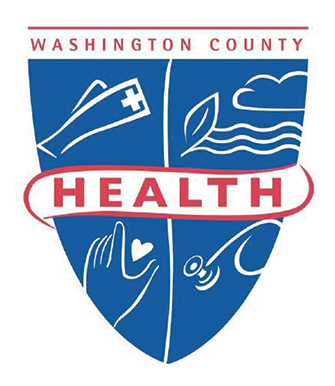Avian influenza or bird flu refers to the disease caused by infection with avian (bird) influenza (flu) Type A viruses. These viruses naturally spread among wild aquatic birds worldwide and can infect domestic poultry and other bird and animal species. Bird flu viruses do not normally infect humans. However, sporadic human infections with bird flu viruses have occurred.
NEW – Avian Flu In the News
- 9/27/25-WCHD issues public awareness alert as dead birds in county test presumptively positive for avian-flu
- H5N1 Bird Flu: Current Situation
- What Causes Bird Flu Virus Infections in Humans
- For People Exposed
- What to Know and Do About H1N1 Bird Flu
Avian Influenza in Poultry (Domesticated Birds)
Domesticated birds (chickens, turkeys, ducks, etc.) may become infected with avian influenza A viruses through direct contact with infected waterfowl or other infected poultry, or through contact with surfaces that have been contaminated with the viruses.
Avian influenza outbreaks in domesticated birds are of concern for several reasons:
- the potential for low pathogenic avian influenza A(H5) and A(H7) viruses to evolve into highly pathogenic avian influenza A(H5) and A(H7) viruses with major agricultural implications
- the potential for rapid spread and significant illness and death among poultry during outbreaks of highly pathogenic avian influenza
- the economic impact and trade restrictions from a highly pathogenic avian influenza outbreak
- the possibility that avian influenza A viruses could be transmitted to humans exposed to infected birds
When avian influenza A(H5) or A(H7) virus outbreaks occur in poultry, depopulation (or culling, also called “stamping out”) of infected flocks is usually carried out. In addition, surveillance of flocks that are nearby or linked to the infected flock(s) and quarantine of exposed flocks with culling if disease is detected, are the preferred control and eradication methods. See Past Outbreaks of Avian Influenza for more information about avian influenza A virus infections in U.S. poultry. More information about avian influenza in poultry in the United States is available through the United States Department of Agriculture’s Animal and Plant Health Inspection Service
Surveillance for Avian Influenza
CDC, the United States Department of Agriculture (USDA)external icon, the World Health Organization (WHO)external icon, the World Organization for Animal Health (OIE)external icon, and the Food and Agriculture Organization of the United Nations (FAO)external icon conduct routine surveillance to monitor influenza viruses for changes that may have implications for animal and public health. CDC and WHO surveillance efforts are focused on human health. FAO and OIE are concerned with issues affecting animals, food and agriculture.
Protective actions around birds
- As a general precaution, whenever possible people should avoid direct contact with wild birds and observe them only from a distance.
- Wild birds can be infected with avian (bird) influenza (flu) A viruses even if they don’t look sick.
- Avoid unprotected contact with domestic birds (poultry) that look sick or have died.
- Do not touch surfaces that may be contaminated with saliva, mucous, or feces from wild or domestic birds.
The best prevention is to avoid sources of exposure
The best way to prevent avian (bird) influenza (flu) is to avoid sources of exposure whenever possible. Infected birds shed bird flu virus in their saliva, mucous, and feces. People rarely get bird flu; however, human infections with bird flu viruses can happen when enough virus gets into a person’s eyes, nose or mouth, or is inhaled. This can happen when virus is in the air (in droplets or possibly dust) and a person breathes it in, or when a person touches something that has virus on it and then touches their mouth, eyes or nose. Bird flu virus infections in people happen most often after close, prolonged and unprotected (no gloves or other protective wear) contact with infected birds and then the person touches their mouth, eyes, or nose.
Additional Resources
- CDC Information on Bird Flu
- U.S. Department of Agriculture (USDA) Avian Influenza Information
General information about avian influenza and instructions on how to report dead birds. - USDA Defend the Flock materials – Keep poultry safe from disease, ENGLISH version
- USDA Defienda Su Bandada
- USDA Animal and Plant Health Inspection Service
Information about avian influenza in the Northern Hemisphere and materials related to protecting the U.S. from avian influenza importation. - Simple steps to keep backyard poultry healthy (USDA) video

